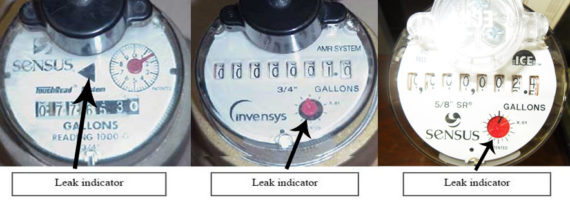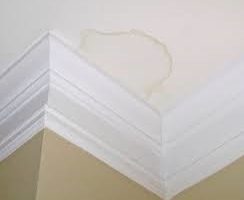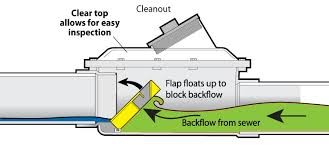How to Check for Silent Leaks in Your Home
3 CommentsFrom time to time we receive phone calls from customers who just received a high water bill in the mail but don’t know why. To prevent a not-so-nice surprise like that, here are a few tips to help.
To determine if you have a leak happening somewhere in your home, start by observing your water meter. First, locate your small inside water meter usually found near the hot water tank or furnace.
Next, turn off all water-using devices. This includes your dishwasher, washing machine, humidifier, sprinkler system, and the water/ice maker in your fridge. Make sure no one uses the toilets or sinks during this time as that will mess up the test.

Most water meters will have a small red or black triangle that spins to show “micro” water usage. If everything is off (including your icemaker!) then even a dripping faucet will show up as the triangle will move. If it doesn’t move at all over the next 2 minutes, then you probably don’t have a leak. If it is moving, try to locate the problem yourself and/or call a plumber.
The most common culprit is the toilet. Did you know that a running on toilet can waste up to 750 to 3,000 litres (200 – 800 U.S. gallons) of water per day? The easiest way to find out if your toilet is leaking is by dropping a toilet leak test tablet or a few drops of food colouring into your tank. Do not flush. If the water in your toilet bowl changes colour after 20 – 30 minutes, it indicates that water is leaking.
Also check underneath your sinks for moisture or leaks. A leak can waste up to 75 litres (20 gallons) of water per day.
Your furnace humidifier should also be checked for signs of leaking. This too can waste hundreds of litres of water and give you a high water bill. It could also cause damage to your furnace.
Other areas to check are your: hot water heater, water softener, fridge water line/valve, dishwasher piping, washing machine hoses/valves and underground sprinkler system.

And don’t forget to look up; there could be signs of a leak on your ceiling or walls with small bubbling in the paint or a change in appearance. A pinhole in a pipe, a small crack in the toilet flange or worn out grout could be slowly and silently causing water damage.
So if you have discovered a leak or even a potential for a leak, call a plumber. It’ll be cheaper to fix it now rather than replacing water damaged floors, ceilings or personal belongings later.
